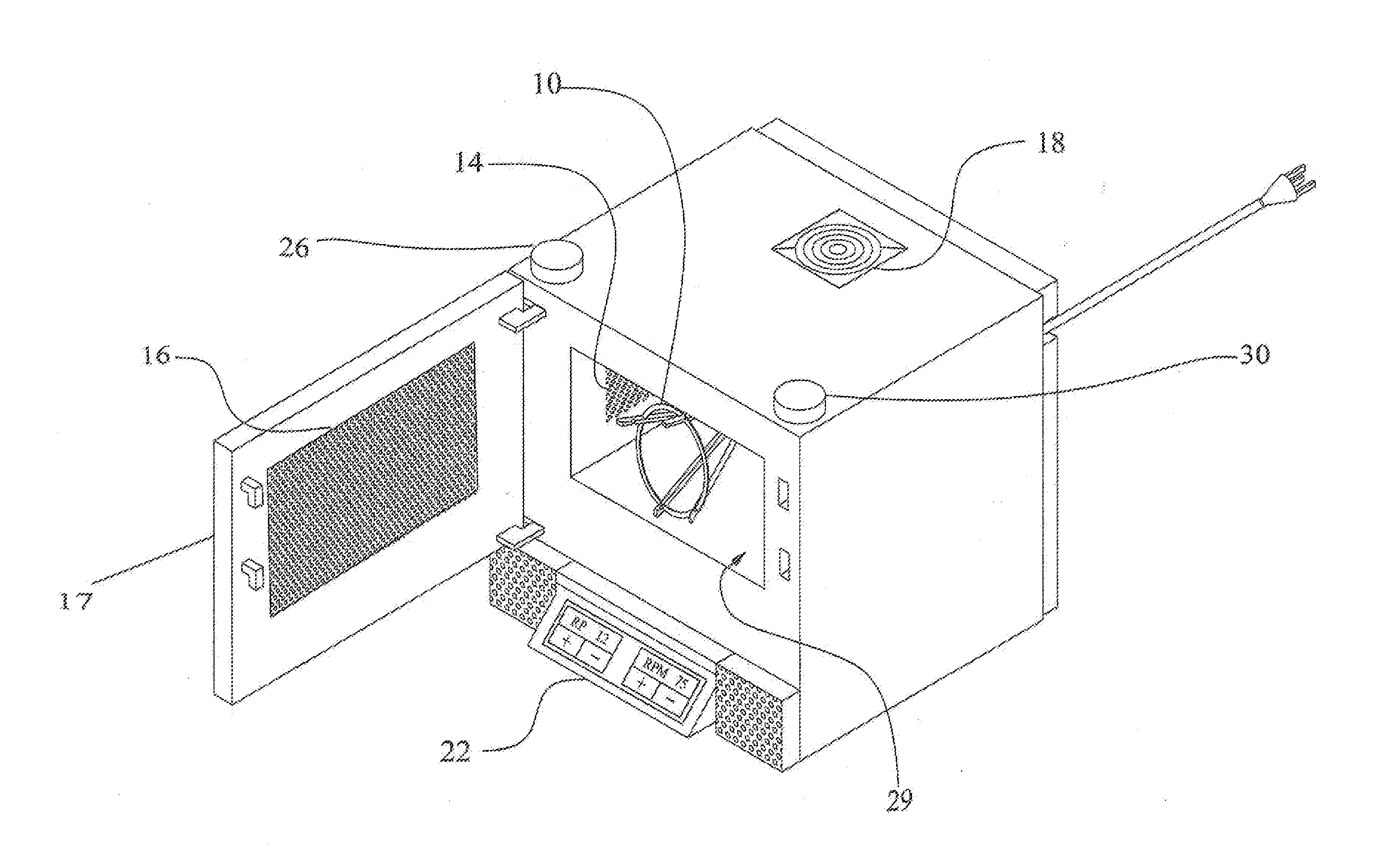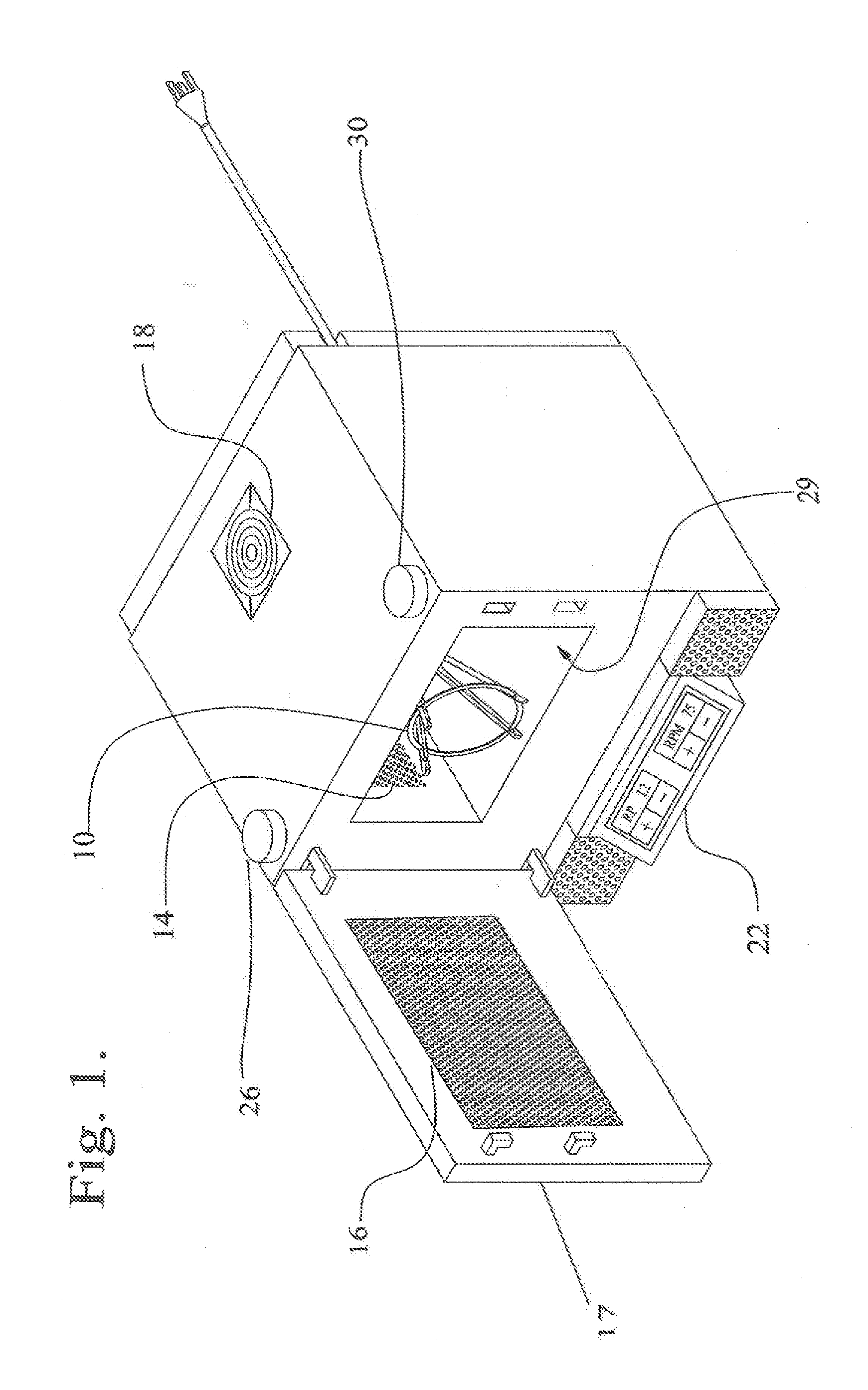Microwave Oven for Roasting Low Moisture Foods
a microwave oven and food technology, applied in food preparation, electric/magnetic/electromagnetic heating, milk preparation, etc., can solve the problems of loss of lighter coffee oil (and its flavor), controllable and easy heat transfer, internal mass of beans to quickly rise to the desired temperature, etc., to minimize the adverse effects of exothermic reactions, reduce thermal runaway, and optimize roasting uniform
- Summary
- Abstract
- Description
- Claims
- Application Information
AI Technical Summary
Benefits of technology
Problems solved by technology
Method used
Image
Examples
Embodiment Construction
[0037]The present invention provides an oven for roasting of a collection of individual food objects in aggregate, such as a food cartridge containing coffee beans. To achieve optimum roasting, it is necessary that the beans be uniformly heated internally via microwaves and externally using thermal conduction, thermal convection, and latent heat from steam released in the container, while minimizing the escape into the air of oils and essences that are components of the coffee bean flavor prior to grinding of the roasted beans. If the heating of the beans is not uniform, some of the beans may crack early in the roasting process and others will not, resulting in non-uniform flavor and deleterious effects from the uncooked beans, or will undesirably require time-consuming sorting of the mixed roasted and unroasted beans. Similarly, it is necessary that roasting temperature be properly controlled to assure proper flavor development, which cannot occur if the roasting temperature is eit...
PUM
 Login to View More
Login to View More Abstract
Description
Claims
Application Information
 Login to View More
Login to View More - R&D
- Intellectual Property
- Life Sciences
- Materials
- Tech Scout
- Unparalleled Data Quality
- Higher Quality Content
- 60% Fewer Hallucinations
Browse by: Latest US Patents, China's latest patents, Technical Efficacy Thesaurus, Application Domain, Technology Topic, Popular Technical Reports.
© 2025 PatSnap. All rights reserved.Legal|Privacy policy|Modern Slavery Act Transparency Statement|Sitemap|About US| Contact US: help@patsnap.com



